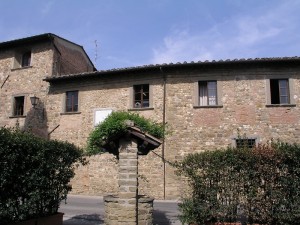A Community for Curious Minds who love History, its Odd Stories, and Good Reads
A Community for Curious Minds who love History, its Odd Stories, and Good Reads
By Holly Tucker
 During the years I lived in Florence, it was hard to escape the shadow of Niccolò Machiavelli. His presence is not as immediately obvious as that of his near contemporaries: Brunelleschi, Donatello, Leonardo, and Michelangelo. These artists represent the sunny side of the Renaissance, the chamber-of-commerce approved representatives of the city. Their brilliant creations have made Florence synonymous with the highest achievements of civilization.
During the years I lived in Florence, it was hard to escape the shadow of Niccolò Machiavelli. His presence is not as immediately obvious as that of his near contemporaries: Brunelleschi, Donatello, Leonardo, and Michelangelo. These artists represent the sunny side of the Renaissance, the chamber-of-commerce approved representatives of the city. Their brilliant creations have made Florence synonymous with the highest achievements of civilization.